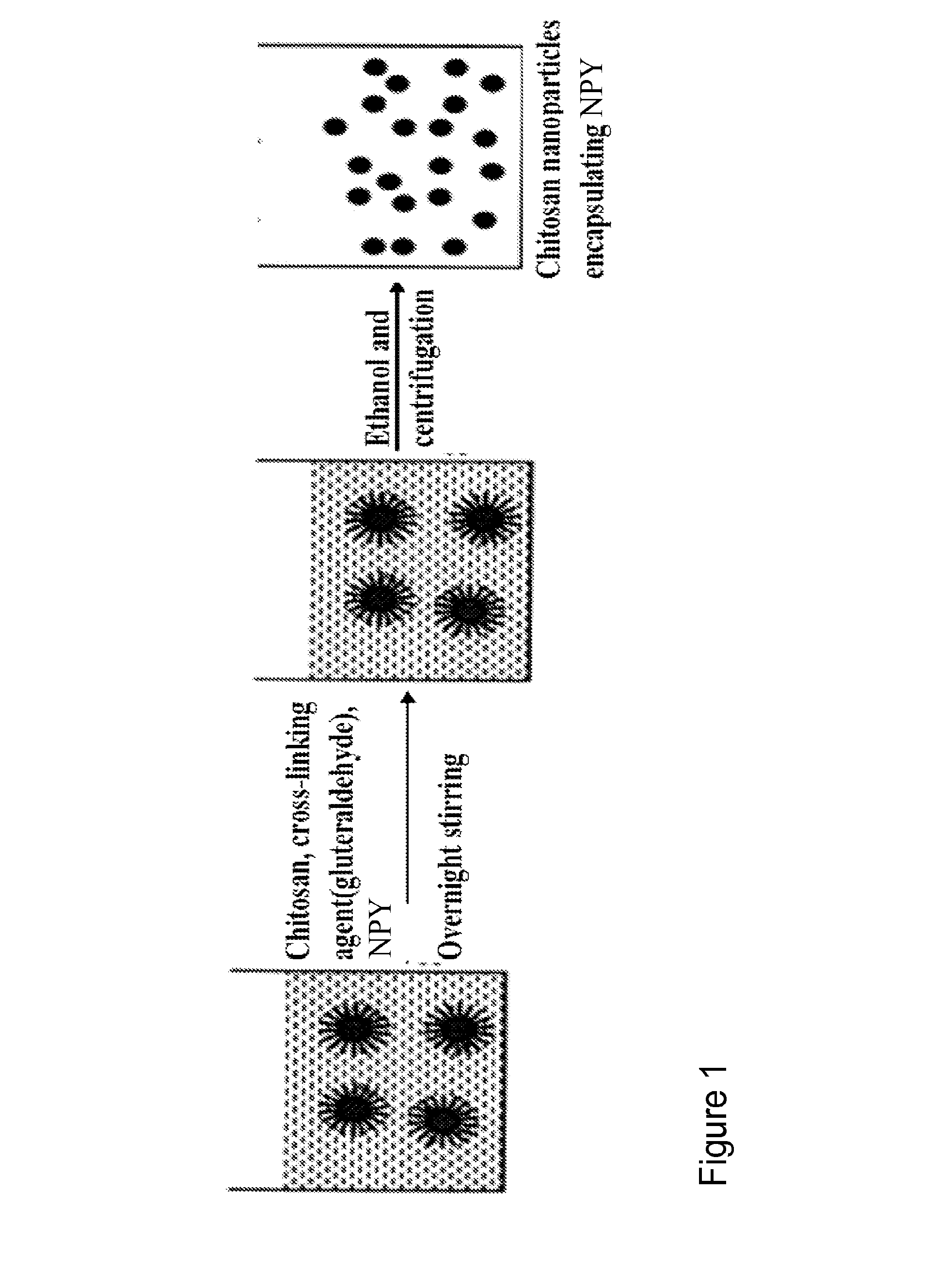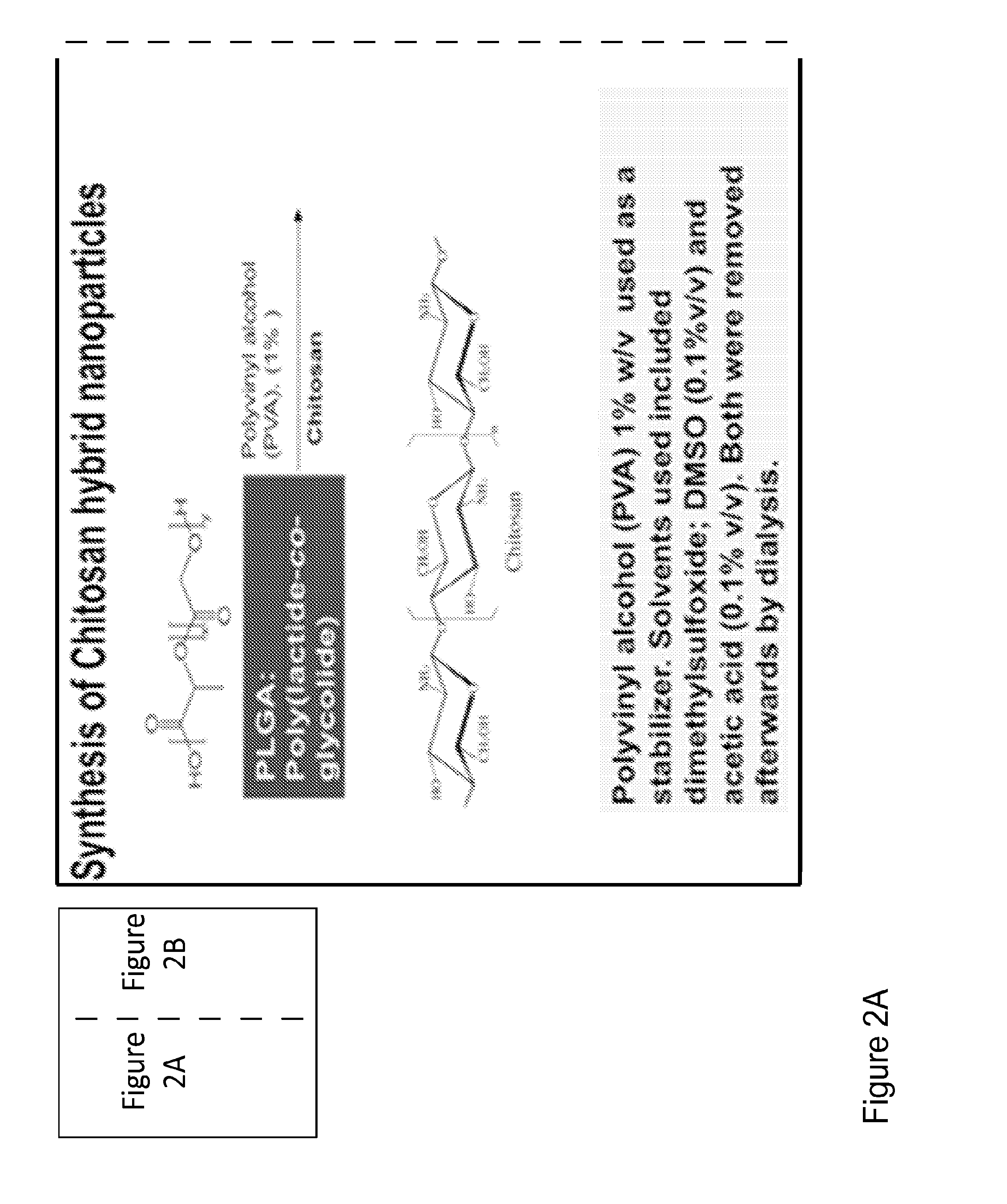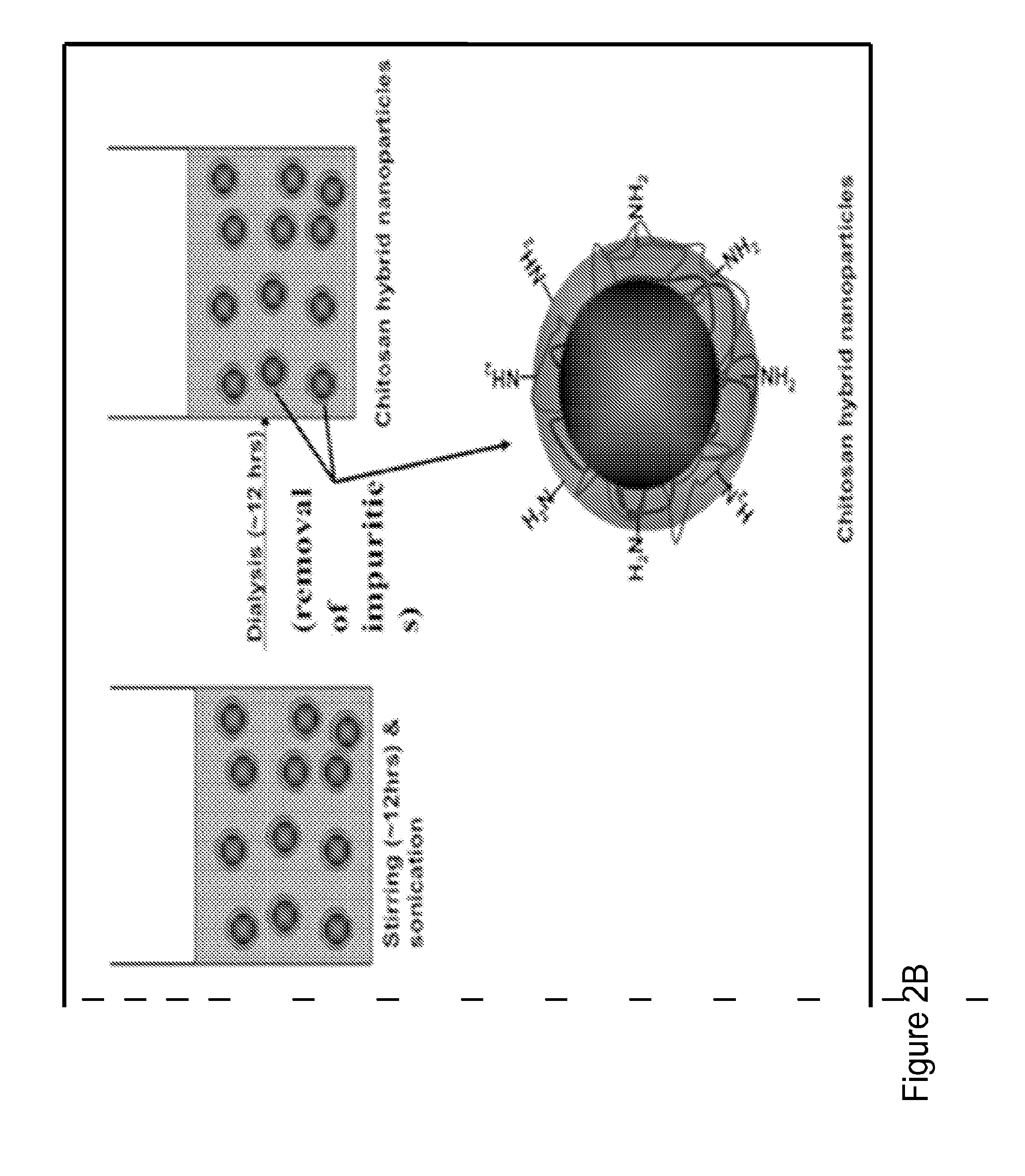Novel hemostatic patch and uses thereof
a technology of hemostatic patch and patch, which is applied in the field of new hemostatic patch and hemostatic patch, can solve the problems of difficult to locate wounds, unique problems of internal tissue wounds, and time lost from treating the actual point of trauma, and achieve the effect of controlling or arresting bleeding in patients
- Summary
- Abstract
- Description
- Claims
- Application Information
AI Technical Summary
Benefits of technology
Problems solved by technology
Method used
Image
Examples
example 1
Synthesis of NPY Encapsulated Nanoparticles
[0120]Chitosan nanoparticles encapsulating NPY are produced using a reverse micellar method. Chitosan polymer and NPY are added to 0.1M AOT / hexane (AOT-Aerosol OT is used as a surfactant) solution to form reverse micelles. Bifunctional reagent gluteraldehyde is added to this reverse micelles system as a cross-linking agent. The chemical cross-linking of chitosan polymers with gluteraldehyde occurs by Schiff's reaction of aldehyde groups on gluteraldehyde and amino groups on the chitosan chain. Finally nanoparticles are separated out by high speed centrifugation.
[0121]In these examples, nanoparticles are optimized as to size, and entrapment efficiency to get an optimum formulation with maximum loading.
example 2
Synthesis of Chitosan-PLGA Nanoparticles
[0122]FIGS. 3A and 3B depict the synthesis and preparation of chitosan-PLGA hybrid nanoparticles with and without VIP. In FIG. 3A, PLGA is mixed with chitosan and PVA(1%) in an overnight stirring and sonication step. Subsequently the mixture undergoes a dialysis step to remove impurities. PVA is used as a stabilizer, while DMSO (0.1% v / v) and acetic acid (0.1% v / v) were incorporated as solvents. These may be removed by the subsequent dialysis step. FIG. 3B, PLGA, NPY, chitosan, and gluteraldehyde are mixed together, for approximately twenty-four hours, in a stirring and sonication step. Subsequently the mixture undergoes a dialysis step to remove impurities. The result is a PLGA-chitosan nanoparticle, wherein the chitosan layer is cross-linked with gluteraldehyde.
[0123]NPY encapsulated in nanoparticles with different degrees of cross-linking is tested for optimal pharmacokinetics. The formulation is optimized for loading efficiency. The ratios...
example 3
Synthesis of Epinephrine Encapsulated Nanoparticles
[0124]Chitosan nanoparticles encapsulating epinepherine are produced using a reverse micellar method. Chitosan polymer and epinephrine are added to 0.1M AOT / hexane (AOT-Aerosol OT is used as a surfactant) solution to form reverse micelles. Bifunctional reagent gluteraldehyde is added to this reverse micelles system as a cross-linking agent. The chemical cross-linking of chitosan polymers with gluteraldehyde occurs by Schiff's reaction of aldehyde groups on gluteraldehyde and amino groups on the chitosan chain. Finally nanoparticles are separated out by high speed centrifugation.
[0125]In these examples, nanoparticles are optimized as to size, and entrapment efficiency to get an optimum formulation with maximum loading.
PUM
| Property | Measurement | Unit |
|---|---|---|
| apparent viscosity | aaaaa | aaaaa |
| diameter | aaaaa | aaaaa |
| diameter | aaaaa | aaaaa |
Abstract
Description
Claims
Application Information
 Login to View More
Login to View More - R&D
- Intellectual Property
- Life Sciences
- Materials
- Tech Scout
- Unparalleled Data Quality
- Higher Quality Content
- 60% Fewer Hallucinations
Browse by: Latest US Patents, China's latest patents, Technical Efficacy Thesaurus, Application Domain, Technology Topic, Popular Technical Reports.
© 2025 PatSnap. All rights reserved.Legal|Privacy policy|Modern Slavery Act Transparency Statement|Sitemap|About US| Contact US: help@patsnap.com



